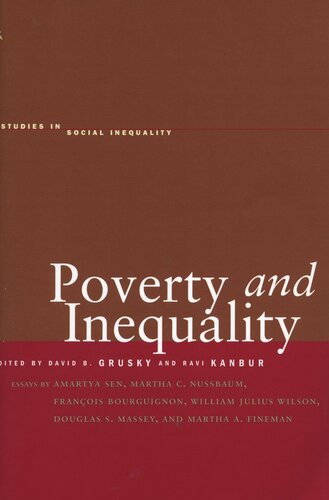

Most ebook files are in PDF format, so you can easily read them using various software such as Foxit Reader or directly on the Google Chrome browser.
Some ebook files are released by publishers in other formats such as .awz, .mobi, .epub, .fb2, etc. You may need to install specific software to read these formats on mobile/PC, such as Calibre.
Please read the tutorial at this link: https://ebookbell.com/faq
We offer FREE conversion to the popular formats you request; however, this may take some time. Therefore, right after payment, please email us, and we will try to provide the service as quickly as possible.
For some exceptional file formats or broken links (if any), please refrain from opening any disputes. Instead, email us first, and we will try to assist within a maximum of 6 hours.
EbookBell Team

4.7
86 reviewsThis volume brings together leading public intellectuals—Amartya Sen, Martha C. Nussbaum, François Bourguignon, William J. Wilson, Douglas S. Massey, and Martha A. Fineman—to take stock of current analytic understandings of poverty and inequality. Contemporary research on inequality has largely relied on conceptual advances several decades old, even though the basic structure of global inequality is changing in fundamental ways. The reliance on conventional poverty indices, rights-based approaches to poverty reduction, and traditional modeling of social mobility has left scholars and policymakers poorly equipped to address modern challenges. The contributors show how contemporary poverty is forged in neighborhoods, argue that discrimination in housing markets is a profound source of poverty, suggest that gender inequalities in the family and in the social evaluation of the caretaking role remain a hidden dimension of inequality, and develop the argument that contemporary inequality is best understood as an inequality in fundamental human capabilities. This book demonstrates in manifold ways how contemporary scholarship and policy must be recast to make sense of new and emerging forms of poverty and social exclusion.